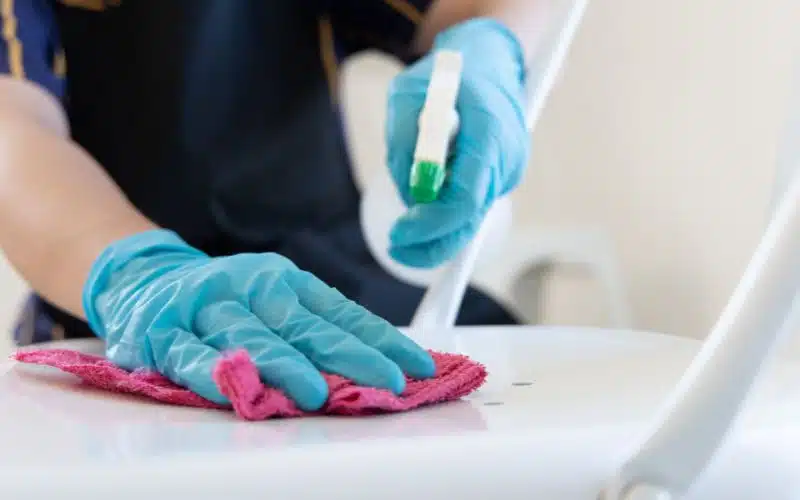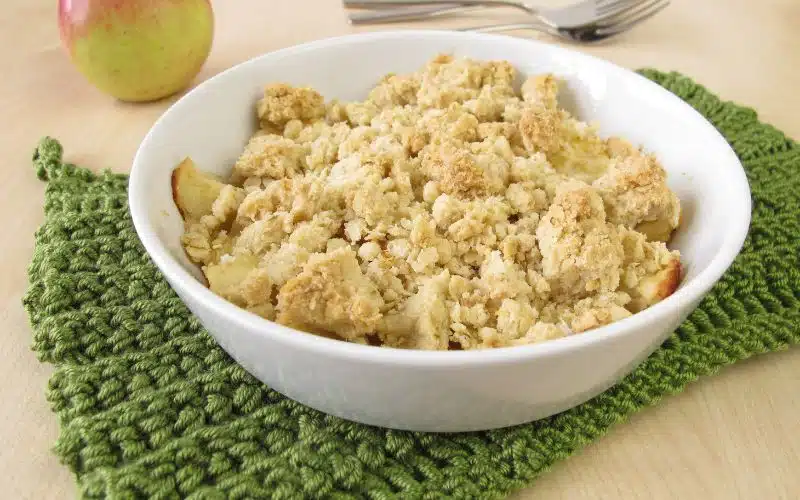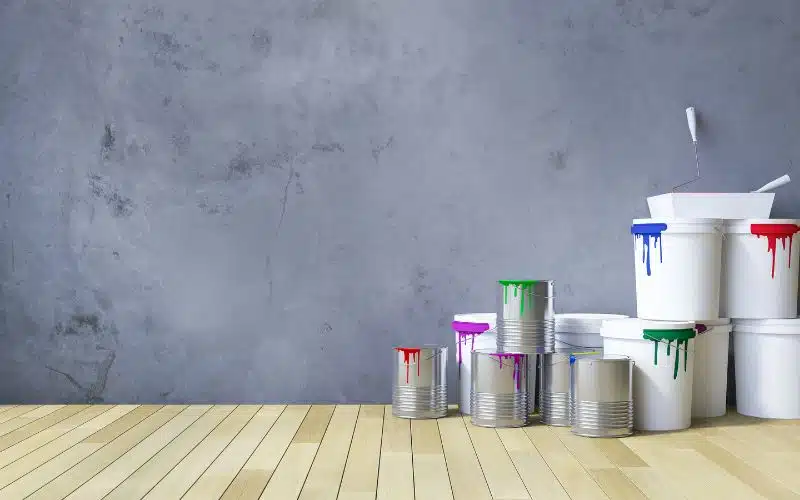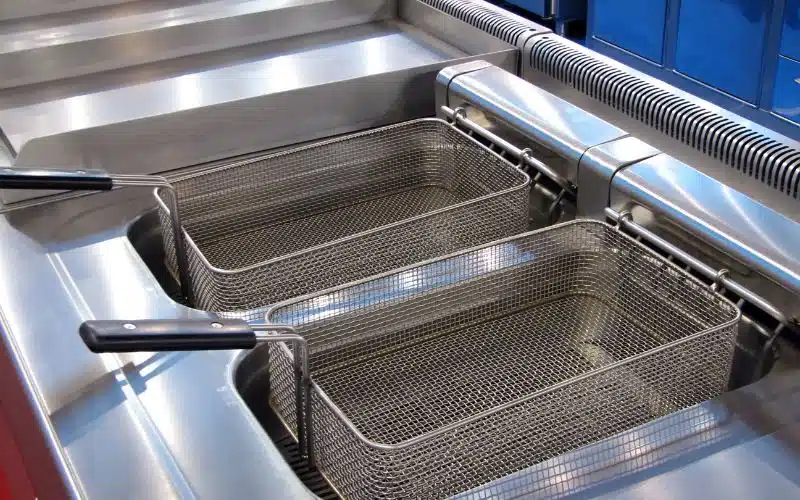Polymers refer to a mixture of fine sands and a small amount of additional material known as polymeric sand.
Polymeric sand ensures that asphalt materials such as large pavers and chunks, typical limestone, and porcelain tiles have solid and complex joins.
Water causes them to be activated and work as a robust restricting material that provides sturdy and safe joints in hardscape setups.
The most pressing question is, “how long does polymeric sand continue to function?”
The lifespan of polymeric sand is ten years. Long-lasting High-Quality Cure Polymeric Sand has a 15-year life expectancy. Experts installing polymeric sand assure that it will last a decade or more. However, environmental factors can shorten the product’s lifetime if complications occur during the curing process.
How Long Does Polymeric Sand Last Between Pavers?
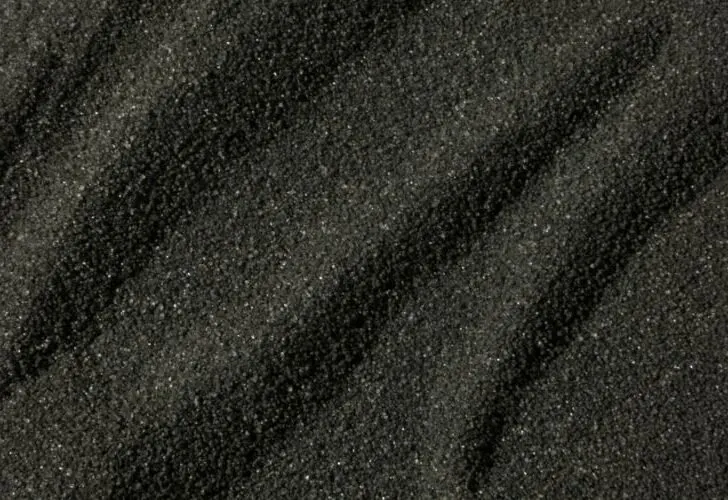
Polymeric sands last ten to fifteen years between pavers, depending on the building and experts performing installation techniques.
Polymeric sand is a blend of refined grains and a binding agent that, when combined with a little amount of water, sets to create a strong sealant everywhere in the paver joints.
You can purchase this kind of sand at most home improvement stores. When installing polymeric sand, the binding agent creates a highly robust seal that inhibits weed growth and ants from creating holes in the paver joints.
Because of this, polymeric sand is an excellent choice for various outdoor patios and paver installations.
As a result of the presence of binding agents and other additives not found in conventional paver sand, installing polymeric sand requires a specific set of processes to be carried out, which might make the operation a bit more time-consuming than usual.
You must ensure that just the joints are moist before you begin filling, including the cracks and joints in your patio.
In addition, to prevent any polymeric sand from being embedded in the paving stones and becoming difficult to remove, the surface must be entirely dry before you can do any work.
In installing polymeric sand, the link it creates between each paver is quite stiff. Therefore, using this sand in a paver project made in a flexible system may lead to cracks and gaps inside the joints.
After making the first application, adding more sand to the mix could be difficult.
When required, regular jointing sand can be reapplied and brushed in with a push broom; however, polymeric jointing sand hardens into a solid surface after it has been between the pavers.
Does Polymeric Sand Expire?
The polymeric sand between the paver stones will eventually degrade and become less evident as time passes.
It indicates that you may need to repair the passage in as little as one to two years, depending on the climatic conditions.
Due to issues with the lifespan, it is impossible to repair any paving stones that have been eroded or damaged.
In addition, you will not be able to fill in the sand; thus, as a substitute, you will have to recreate the whole walkway.
If you hire installation professionals, you can easily replace the entire paving stone damaged. As a result, there would be a reduction in the money and time required for maintenance.
Using paving sand does, of course, has the side effect of speeding up the development of other polymeric sand issues.
As a result of the erosion of the walkway, you will see that needless weed growth has begun to occur.
The degrading influence resulting from weathering and time leads to a route that needs further care or that you must redo to have a higher-quality pathway.
Finding the appropriate materials is the first step that skilled constructors take. Applying polymeric sand is an essential component of the materials for your landscaping route.
This kind of sand does not erode, is simple to replace, and enables you to take pleasure in an aesthetically beautiful pathway without needing upkeep.
How Permanent Is Polymeric Sand?
Much time and effort go into landscaping, so you want to ensure that the results last a long time.
Therefore, the permanence of the joint paver sand you choose is of the utmost importance. When used correctly, polymeric sand has a potential lifespan of up to ten years.
The average lifespan will vary depending both on the product and the environment.
However, this does not necessarily imply that other factors will wash all of the sand away in the allotted amount of time.
It implies that your pavers must regularly undergo maintenance to prevent drifting. Additionally, the drying time for installing polymeric sand is a minimum of twenty-four hours.
In most instances, the sand is ready to mix with the rain after it has been allowed to dry for an hour.
The pavers should not be moved or touched when the sand is left alone to dry. When you move the pavers, you risk moving the sand from its current place.
In addition, it may add moisture to it, which will cause the curing process to fail. Therefore, a more extended period for drying and curing in shaded places is needed.
How Do You Maintain Polymeric Sand?
There are several ways to maintain polymeric sand, but here are great headstarts and tips crafted to help you maintain their integrity.
#1. Storage
Maintaining polymeric sand joints requires that you have a bag of this high-grade sand on hand at all times so that you may use it whenever the situation calls for it.
Therefore, it would be best to store the package in a cool, dry area that is out of direct sunlight.
If you do not use the polymeric paver sand and right away, do not remove it from its packaging.
If you have no choice but to store the bags outdoors, protect them from the sun and the rain by covering them with a waterproof tarp.
#2. Examining All Joints
Check to determine if any of the joints are deteriorating. Use a screwdriver or any instrument with a sharp edge to scrape the substance away from whatever location you may find it. You’ll be using the best polymeric sand to patch this weak joint.
#3. Polymeric Sand Application
When you have finished doing all of this, you may next sweep polymeric sand over your brick pavers.
Make sure the sand is distributed evenly by using a hand broom. It is not suitable for the joints to have any cavities. Spread this sand into any gaps you locate in your joints.
#4. Leaf Blower
Remove any extra polymeric sand on brick pavers using a leaf blower. Make sure to exercise caution while using the leaf blower so the sand doesn’t get blown out of the joints.
Your objective is the sand that has accumulated in excess. If you don’t remove this surplus sand correctly, it will become moist and cling to the top.
Maintaining polymeric sand takes a high level of ability and experience to be done in a manner that is both proper and safe.
Therefore, you must delegate this task to trained personnel if you want to maintain your sanity and save yourself the necessary time and effort.
Will Rain Mess Up Polymeric Sand?
The polymeric sand lifespan becomes more porous with each rainfall.
Therefore, when there is insufficient polymer to keep the sand in place, the sand begins to wash away exactly as mason sand does when there is an insufficient polymer.
An overlay of polymeric sand may remain potent for around five years, even though, in principle, it can last up to ten years.
As a result, the first weeds appear as early as the second year after planting. Any weed that does appear must be cleaned without delay to avoid the whole thing from being ruined.
Because the precise composition and kind of polymer used may vary from manufacturer to manufacturer, so can the appropriate application techniques.
Therefore, before beginning work, it is essential that you carefully read the directions to ensure that the sand is applied correctly and serves its intended purpose while also enduring for the long term.
Schedule the task for two or three days when the weather will be pleasant and dry.
Sand has to be allowed some time to harden before you can use it, and if heavy rain falls on it too soon in the process, you’ll end up with a muddy mess. When you begin, ensure that all the pavers are dry.
When wetting the joints, you should ensure that the polymeric paver sand does not get loosened and carried away by flowing water. Give the sand a chance to dry for at least forty-eight hours.
When Should You Not Use Polymeric Sand?
Several things shouldn’t be in use while installing polymeric sand.
The advantages unquestionably outweigh the disadvantages, but it is essential to understand what you are working with before incorporating polymeric sand into the paver joints in your driveway or walkway.
Rain is the worst weather for installing polymeric sand, so avoid doing it if you can. Your hardscape will be ruined by haze and the sticking of sand grains to the surface of the pavers if it rains.
Polymeric Sand incurs several advantages; nevertheless, the most significant negative impact is that it may be challenging to use correctly, particularly if you do not adhere to the directions by the manufacturer.
Follow the instructions provided by the manufacturer and educate yourself on the most effective method to employ to avoid making typical errors.
For example, if a crust develops on the surface of the sand, this almost often indicates that you filled the sand to a higher level than it should have been or that it was not hydrated enough.
If the sand is too high during installation, it will continue to be worn down and eroded.
In addition, if the sand were not sufficiently moistened, the top layer would be able to crust over and flake off. At the same time, everything underneath it would remain relatively pliable.
This action would result in the top layer being unable to hold its shape. Unfortunately, removing the sand and its subsequent replacement with new sand is the only way to fix this issue.
How Long Does It Take Polymeric Sand To Cure?
The curing time for polymer sand is 12 hours, while the drying time is 24 hours.
Because the curing process is the last stage in the installation of polymeric sand and significantly influences the material’s performance, it is essential to provide the material with sufficient time to cure.
When it rains, regular sand does not become sufficiently firm and is more likely to spread. At the same time, the pavers’ joints are held together by the solidifying polymeric sand.
This action inhibits shifting, even though the surface is moving and there is high traffic. In addition, it gives off an air of neatness and elegance.
Because of these characteristics, polymeric sand has an advantage over traditional sand.
Polymeric Sand Checklist
| Factors | Materials/Examples |
|---|---|
| Paving type | Concrete pavers, natural stones, and clay bricks |
| Temperature | Above thirty-two degrees Fahrenheit |
| Watering | Yes |
| Safionsety precautions | Gloves, masks |
Conclusion
In a nutshell, polymeric sand is an effective adhesive placed under brick pavers to keep the pavers in place.
Furthermore, it is a long-lasting material that has the potential to survive for up to fifteen years, provided the installation procedure with the appropriate level of care is carried out.
